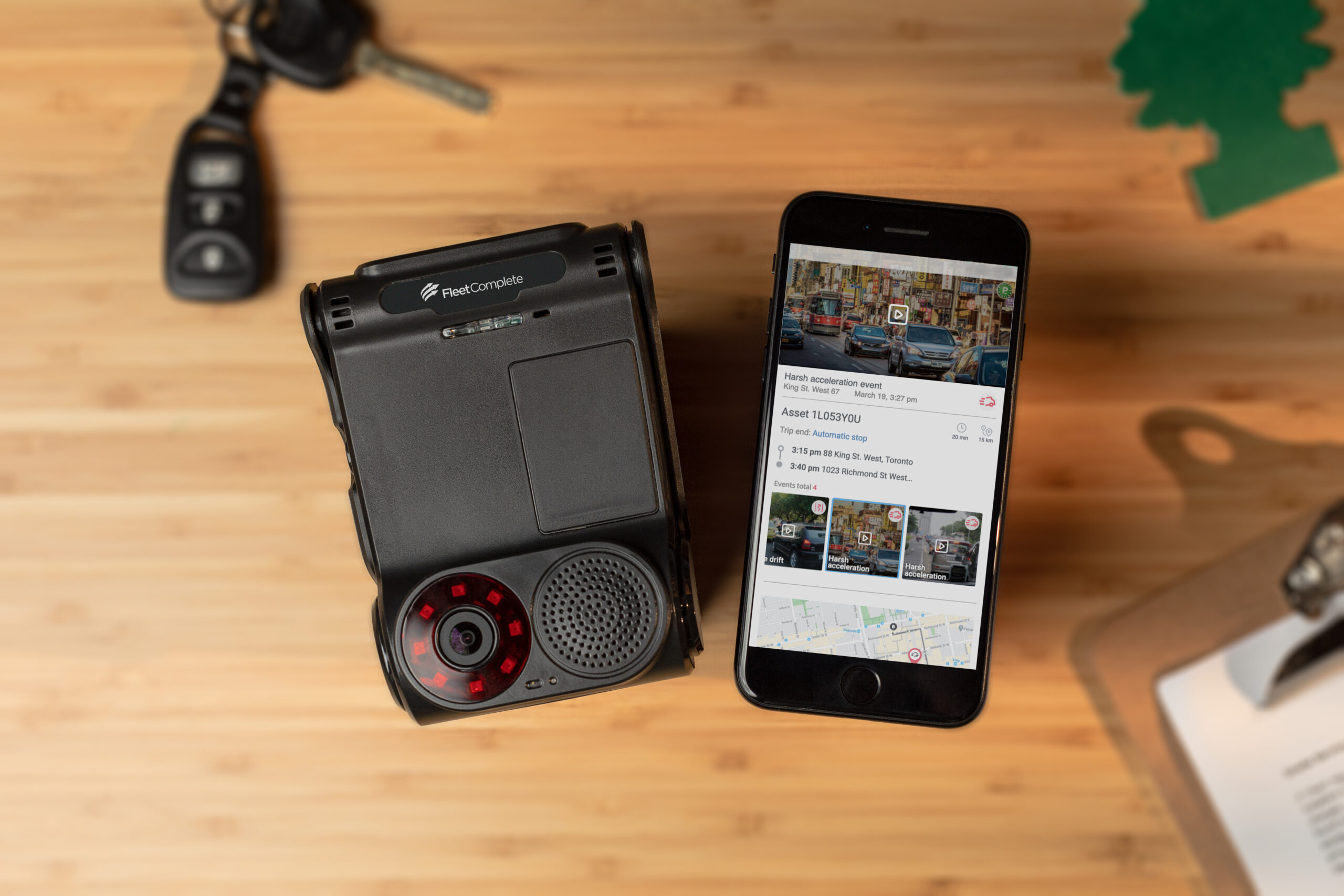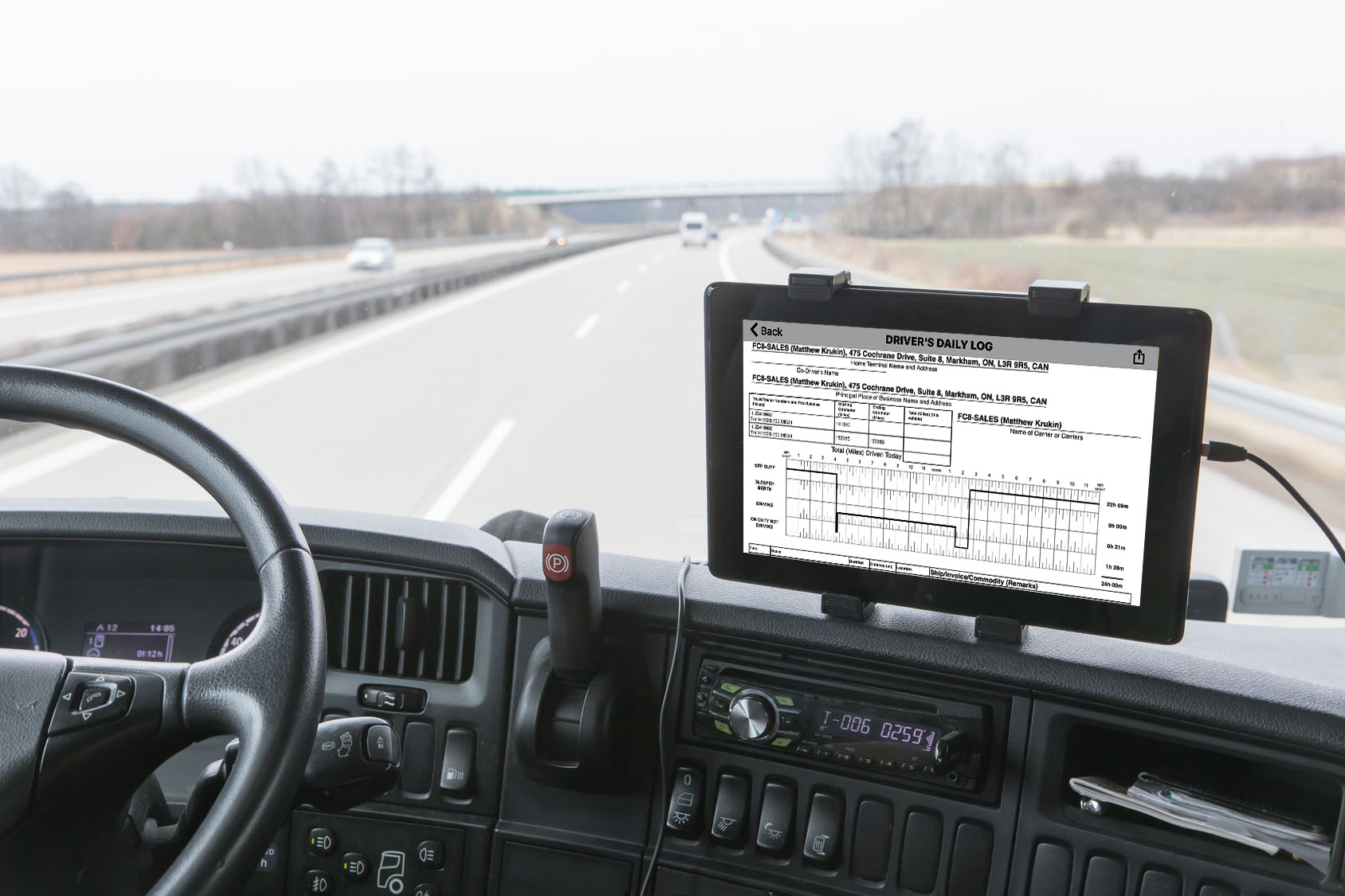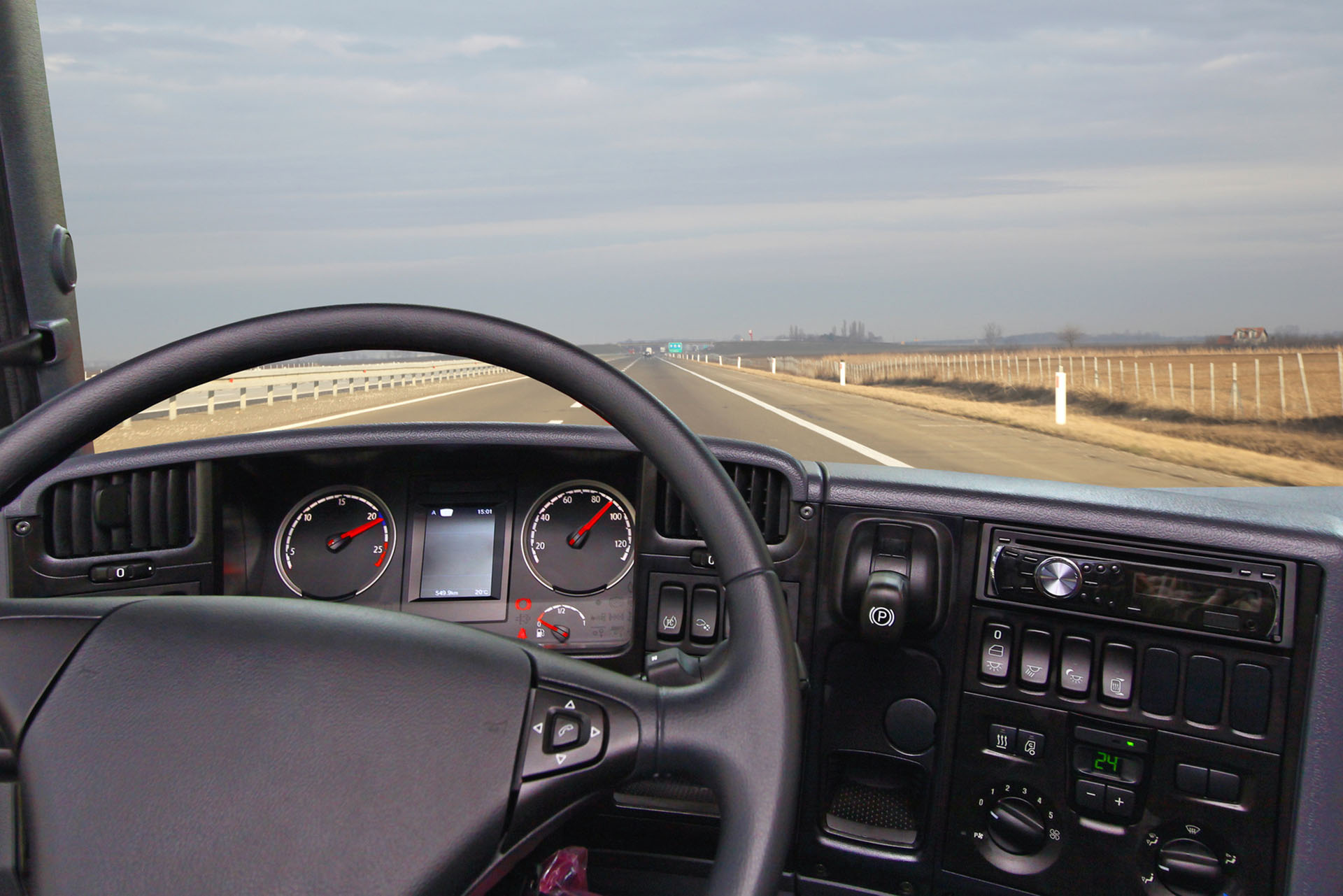On-duty time means the period that begins when a driver begins work or is required by the motor carrier to be available to work. The main exception is where a driver is waiting to be assigned to work. On-duty time will also end when the driver stops work, or is relieved of responsibility by the motor carrier.
In Canada:
On duty time includes driving time and time spent by the driver performing the following duties:
- Inspecting, servicing, repairing, conditioning or starting a commercial vehicle;
- Travelling in a commercial vehicle as a co-driver, when the time is not spent in the sleeper berth;
- Participating in the loading or unloading of a commercial vehicle;
- Inspecting or checking the load of a commercial vehicle;
- Waiting for a commercial vehicle to be serviced, loaded, unloaded or dispatched;
- Waiting for a commercial vehicle or its load to be inspected;
- Waiting at an en-route point because of an accident or other unplanned occurrence or situation;
- Resting in or occupying a commercial vehicle for any other purpose, except
- Time counted as off-duty time while traveling as a passenger.
NOTE: Clause (i) allows a driver who has, at the request of the motor carrier by whom the driver is employed or otherwise engaged to spend time travelling as a passenger in a commercial vehicle to the destination provided the driver takes 8 consecutive hours of off-duty time before beginning to drive. If this condition is met, the time spent as a passenger can be counted as off-duty time for this driver before he/she begins to drive. - Time spent in a sleeper berth,
- Time spent in a stationary commercial vehicle to satisfy the mandatory and daily off-duty time requirements as described in sections 13 and 14, and
- Time spent in a stationary commercial vehicle that is in addition to the off-duty requirements of section 14; and
- Time counted as off-duty time while traveling as a passenger.
- Performing any work for any motor carrier.
In U.S.:
It includes the following activities:
- All time at a plant, terminal, facility, or other property of a motor carrier or shipper, or on any public property, waiting to be dispatched, unless you have been relieved from duty by the motor carrier;
- All time inspecting, servicing, or conditioning any truck, including fueling it and washing it at any time;
- All driving time, as defined in the term driving time;
- All other time in or on a commercial motor vehicle other than:
- Time spent resting in or on a parked vehicle, except as otherwise provided in Section 397.5 of the Federal Motor Carrier Safety Regulations;
- Time spent resting in a sleeper berth;
- Up to 2 hours riding in the passenger seat of a property-carrying vehicle moving on the highway immediately before or after a period of at least 8 consecutive hours in the sleeper berth;
Note: Clause (iii) requires drivers to take 8 consecutive hours in the sleeper berth, and allows them to take an additional 2 hours in the passenger seat when the vehicle is moving, without artificially confining them to the sleeper berth for the entire 10-hour period.
Clause (iii) provides team drivers with the opportunity to “keep the truck moving” by having ‘Driver A’ drive for 10 hours (not consecutively with a 30-minute break required at the 8th hour) while ‘Driver B’ obtains a full daily rest period without having to stay in the sleeper berth for 10 straight hours.
Driver B’ can take 8 hours in the sleeper berth and 2 hours in the passenger seat to accomplish the required off-duty period. Then ‘Driver A ’ make switch with ‘Driver B’ to keep the truck moving.
This driver team approach could continue to operate in this manner until either driver reaches the maximum limit of 60 or 70 hours on duty in any 7 or 8 day period. It is important to note that only the first 2 hours in the passenger seat of the commercial motor vehicle can be combined with the 8 hours in the sleeper berth to get the required 10 consecutive hours off-duty. Any hours spent in the passenger seat after these 2 hours count must be logged as – on-duty (not driving) time.
- All time loading, unloading, supervising, or attending your truck; or handling paperwork for shipments;
- All time taking care of your truck when it is broken down;
- All time spent providing a breath, saliva, or urine sample for drug/ alcohol testing, including travel to and from the collection site;
- All time spent doing any other work for a motor carrier, including giving or receiving training and driving a company car; and
- All time spent doing paid work for anyone who is not a motor carrier, such as a part-time job at a local restaurant. The bottom line is that on-duty time includes all time you are working for a motor carrier, whether paid or not, and all time you are doing paid work for anyone else.
NOTE: Federal Motor Carrier Safety Administration (FMCSA) excludes from the definition of on-duty time any time resting in a parked commercial motor vehicle, with the driver relieved of all responsibility for the vehicle.
Travel Time
“Travel time” refers to the time a driver is being transported to a new location as part of their job, while not performing any driving on the trip. Any travel time a driver does at the direction of their motor carrier is considered on-duty time. However, if a driver takes at least 10 consecutive hours off duty once he/she gets to their destination, the driver may count all of the time, including the travel time, as ‘off-duty’.
Example: A motor carrier sends a driver on a bus for 8 hours to pick up a truck and drive it back. The driver are simply riding the bus and not doing any other work for the motor carrier company. Before driving the truck the driver takes 10 consecutive hours off duty. In this case the driver may count all of the travel time as off duty as well.
The regulation on travel time is found in Section 395.1(j).
The definition of on-duty time is found in Section 395.2.
What Is Off-Duty Time?
By understanding the definition of on-duty time, a driver will get a good idea of what is considered off-duty time. In order for time to be considered off-duty, a driver must be relieved of all duty and responsibility for performing work.
A driver must be free to pursue activities of their own choosing, and be able to leave the place where their vehicle is parked. If a driver is not doing any work (paid or unpaid) for a motor carrier, and the driver is not doing any paid work for anyone else, the driver may record the time as off-duty time.
Finally, FMCSA has also updated their guidance on personal conveyance and I wrote a Blog on this subject to explain these requirements in detail. Click to read the blog on Personal Conveyance.



































































































